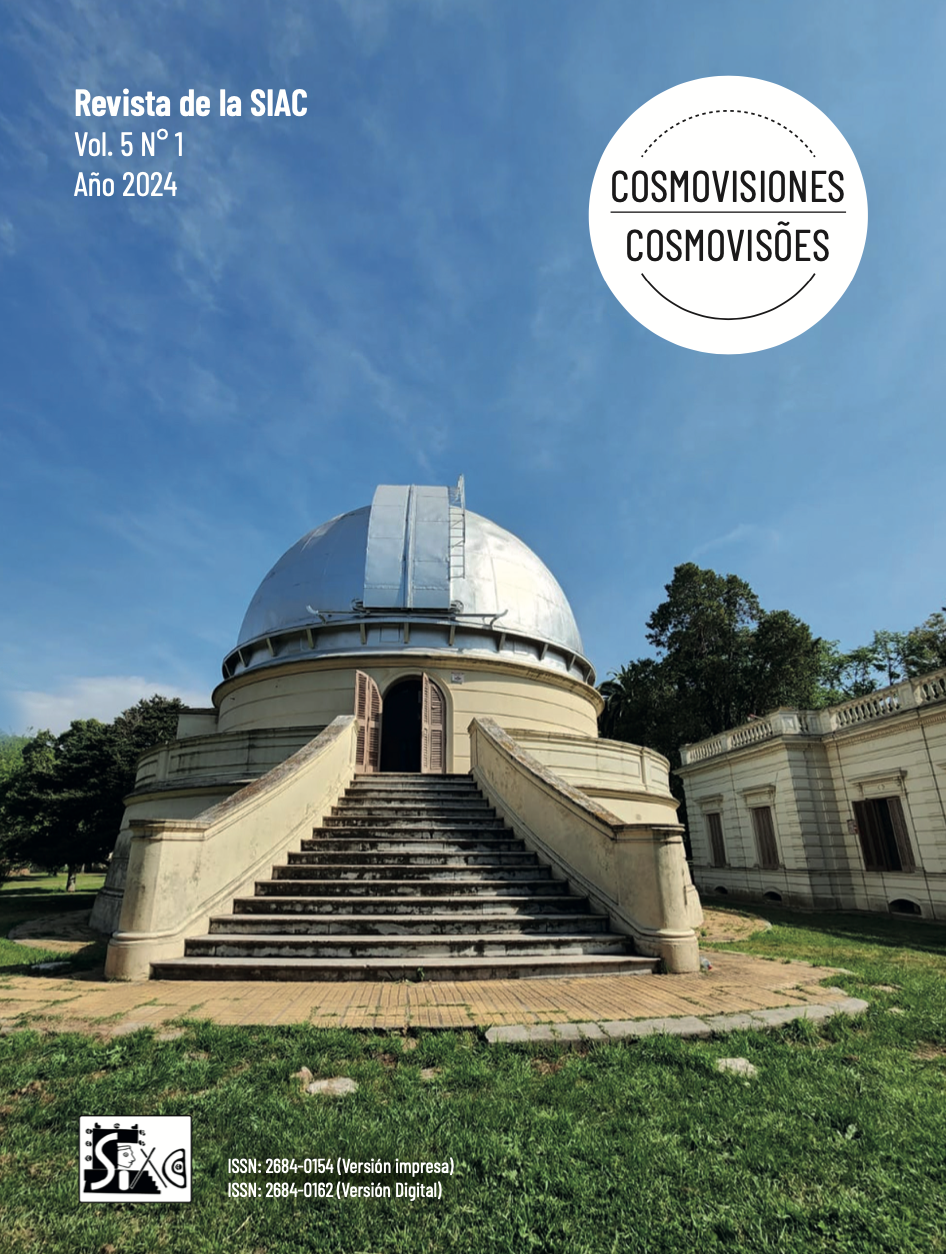Ja’ab as the Foundation of the Buen Vivir Curriculum: Application in Two Primary Schools in Tulum, Quintana Roo
DOI:
https://doi.org/10.24215/26840162e014Keywords:
Ja’ab, Yucatan Peninsula, good living, bioculture, primary educationAbstract
Since 2010, the General Directorate of Intercultural Indigenous and Bilingual Education of Mexico commissioned teachers to implement study plans and programs for the subject 'Indigenous Language' at the Primary level. In the case of the Yucatan Peninsula, commissioned teachers focused on developing a study program relevant to the Mayan culture, framing it in the Buen Vivir. This program is fundamentally based on the knowledge, use and management of the ja'ab by the teacher, the students and their families. During the 2021-2022 and 2022-2023 school years, two teachers, co-authors of the study program, tested a ja'ab model that emerged from a process of participatory study and intercultural dialogue complemented by studies of Mayan epigraphic and astronomic material. For ten years the intercultural team Earth Timekeepers has worked in the Yucatan Peninsula with an inclusive, exploratory and non-imposing methodology. The participants are characterized by being older people who work in the milpa or cornfield, practice beekeeping, collect gum, hunt in a traditional way, and observe the movements of the Sun, Moon and stars. In addition, there are cultural promoters, schoolteachers, stewards of patron saint festivals, Aj Menob’ prayer-makers, university students and women housewives. Everyone agrees that the beginning of the Ja'ab year is between August 13 and 15 of each year, and that months such as Keej (deer) or Tséek (skull) refer to events of ecological and cultural relevance. This reinforces the conclusions of the studies that members of the same intercultural team have been carrying out based on epigraphic records in codices, stelae, archaeastronomic records, and colonial codices such as Pérez. In the context of the new primary school curriculum in the Yucatan Peninsula that focuses on Good Living, teachers have designed a set of practical exercises to apply in two primary schools. The exercises begin with the observation of the birth of the Sun at dawn so that the child can record the apparent movement of the Sun over the horizon. From there, they associate the equinox event of September 22 with the beginning of the twenty-day month Sip, which allows them to signify the date 0 Sip that appears in Ja'ab itself. The set of exercises includes visiting the place in the community where the markers of the four directions are located, and acknowledging that have existed since pre-Hispanic times. This practical approach to the Ja’ab in the context of the classroom, the home and the community, has allowed the children to understand the calendar and relate to it in a meaningful way, as they can easily follow the natural cycles and Sun. In doing so, teachers, parents and children re-signify and reinterpret the biocultural legacy expressed in festivals, rituals and activities in the cornfields and in the moutains.
Downloads
References
Albó, X.(2009) “Suma qamaña. El Buen Convivir”. Revista Obets, 4:25-40.
Cat Collí, M.A. (2015) Xooc K'íin. Las Cabañuelas Mayas. Tesis para obtener el Grado de Licenciado en Antropología Social. Repositorio Institucional UQRoo. Universidad Autónoma del Estado de Quintana Roo. Consultado en https://risisbi.uqroo.mx/handle/20.500.12249/1067
Chuchiak, J. (2005) “El regreso de los autos de fe: Fray Diego de Landa y la extirpación de las idolatrías en Yucatán, 1573-1579”. Península1,0, 29-47.
Choquehuanca, D. (2010)“25 postulados para entender el ‘Vivir Bien’”La Razón, 31 de enero de 2010, La Paz: Ministerio de Relaciones Exteriores.
Cuestas-Caza, J. (2018) “Sumak Kawsay is not Buen Vivir” Alternautas. 5, 1:51-66 EarthTimekeepers. Página web en https://earthtimekeepers.org/Landa, D. (1566) Relación de las Cosas de Yucatán. Consultado el 02/04/2024https://www.wayeb.org/download/resources/landa.pdf
Lander, E. (ed.) (2000) La colonialidad del saber: eurocentrismo y ciencias sociales: perspectivas latinoamericanas. Caracas, Venezuela: Fac. Cs. Económicas y Sociales e IESALC.
Morales G., R. (Coord.) (2018) Asignatura Maya.U Áanalte’ilXoknáal. Ka’aja’abXook. México: SEP, DGEIIB.
Patrick Encina, Geraldine (2013). “Cuenta Larga en función del Haab’ y su relación Venus-Luna: aplicación en Chichén Itzá.” En Revista Digital Universitaria, mayo 2013 (Vol 14, No.5).
Schavelzon, S. (2015) “El concepto de Vivir Bien/Buen Vivir. Plurinacionalidad y Vivir Bien/Buen Vivir” CLACSO, 181-268.
Thompson, E. (1935) “Maya Chronology. The Correlation Question” Contributions to American Archaeology, 24:53-104.
Thompson, P. (1986). “The Structure of the Civil Hierarchy in Tekanto, Yucatan: 1785-1820.” Estudios de Cultura Maya, 16:183-205.
Downloads
Published
How to Cite
Issue
Section
License
Copyright (c) 2024 Norberto May Pat, Geraldine Ann Patrick Encina, Narciso Tuz Noh

This work is licensed under a Creative Commons Attribution-NonCommercial-ShareAlike 4.0 International License.
Authors who publish in this journal agree to the following terms:
The authors retain intellectual authorship of the work and guarantee the journal the right to be the first publication of the work.
Authors may share the work with acknowledgment of authorship and the initial publication in this journal.
Authors may separately establish additional agreements for the non-exclusive distribution of the version of the work published in the journal (for example, placing it in an institutional repository or publishing it in a book), with an acknowledgment of its initial publication in this journal.
The journal offers free access ("open access") to all its content. The articles are available to be read, downloaded, copied, printed and/or researched according to the Creative Commons license: CC BY-NC-SA (Attribution - Non-Commercial - Share Alike-4.0 International)

The content of the journal is fully available from its publication. Readers are required to correctly cite the journal and the author of the downloaded content
















